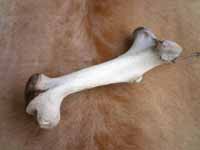 |
| 'character' and 'fault' /「味」と「不良品」 |
January 2007 |
|
 |
 |
 |
"The fine line between 'character' and 'fault'."
It is very important for any fashion manufacturer to strike a balance between quality, brand image, the image associated with the place of manufacture, and price. I find that often I undertake this balancing process almost sub-consciously at the product design and planning stage, but sometimes it is useful to sit and think about it carefully. I had occasion to do that recently.
A photographer who was doing a photo shoot for me the other day was wearing a popular men's designer brand t-shirt, which is made in US and sells at a very high price. I noticed at once that the side seam was twisted from front to back, which is a common problem with knitwear. A lot of yarn manufacturers, spinners and garment manufacturers have worked very hard for years to develop techniques to avoid this twisting, but it still occurs in many garments. I was very interested to find that my photographer perceived what to me was a clear fault in his designer t-shirt, as a feature which added character to the shirt. If this twist fault had occurred on a cheap t-shirt from a high street shop, I have no doubt that it would have been labelled as a quality fault. This caused me to think about the difference between a fault which is perceived as adding character and a fault which is just a fault. It is a complicated question, but it seems to me that a basic distinction has to be drawn between goods which are of fundamentally 'good' quality (whether actual or perceived) and goods which are of fundamentally 'poor' quality. The fault is much more likely to be seen as adding character in the case of the good quality goods, and as just a fault in the case of the poor quality goods. This distinction is further complicated by the common occurrence of deliberate 'faults' which are not really faults at all, but rather design features, like pre-torn jeans and fabric which is designed to fade after a couple of washes.
I recently had a debate with one of my Japanese customers about such a design feature which occurs with the ShweShwe cotton fabric from South Africa which I use for my Mouflon Collection. Traditionally, ShweShwe cotton has been treated with starch to protect the fabric during manufacturing, so it leaves the factory as very crisp fabric. Before using ShweShwe to make up garments, it has to be washed several times to get a soft cotton handling. This is part of ShweShwe's character, not a fault.
My favourite Welsh blanket fabric, which I incorporate into many of my products, has a quite hard and itchy texture when it is new, but no-one suggests that the hardness and itchiness is a fault. After several washes, it becomes soft, and this is part of its character. The interesting result of this is that new Welsh blankets are not especially popular, but vintage Welsh blankets are very popular and sell at smart interior shops at a higher price than the new ones. The 'aged character' is more attractive to buyers. So I suggested to my Welsh factory that they should put the new blankets out in a field for a few weeks to let them get damaged and 'aged'. Given the years of effort which they have put into developing and producing beautiful new blankets, they understandably have difficulty getting to grips with my suggestion that goods be deliberately 'damaged' prior to being sold. But of course that is just what the makers of 'pre-torn' and 'pre-faded' denim jeans have been doing for years. It is not a fault. It is character.
Thinking about this fine and blurred line between fault and character reminded me of the importance for designers and makers to keep telling the background stories about the character of their materials and products. But 'character' should never be used as an excuse for poor workmanship, or failure to innovate. That, however, will have to be a subject for another column.(H)
PHOTO:
THE BONE bought from a stall in the Karoo, South Africa. Is it 'rubbish'!? or an 'interior object'!?

『質、産地イメージ、ブランドイメージ、値段のバランスが上手くとれているのが理想的。』
先日一緒に仕事をした男性が日本の人気メンズブランドのTシャツを着ていらっしゃいました。アメリカ製、値段も高価。脇の縫い目が前後にねじれ現象が起きていました(ニット、ジャージーものに起こりがちな現象で、糸メーカーや、工場はこのねじれを出さない工夫努力で大変なんです)。このねじれが量販店の安価なTシャツに起きたら即返品! 「不良品」なんです。でも、このねじれはブランドのイメージ、アメリカ産から湧き出る雰囲気、高価であるという事実の組み合わせで、「味」になり「かっこいい」になっちゃうんですね。
ムフロンコレクションで使っている、南アフリカのシュエシュエ生地も伝統的に硬い糊で仕上げているため、最初数回洗うまでコットンの柔らかさが出ず、パリパリした手ざわり。でも、これもシュエシュエ特有の「味」なんです。デニムも、初めはがっしりした手触りですが、色落ちや、手触りの変化、穴や傷を楽しみますよね。これも30年近くかかって人々に認識された「味」です。
この「hikaru's eye」で何度も登場している私の大好きなウェールズの毛布も、硬くてチクチクして重いのですが、同じ模様や色でも軽くてフワフワだったら、「味」がなくなり違うモノになってしまいます。実際、新品のウェールズの毛布は、重くチクチクしていると敬遠され人気がないのですが、同じ商品のビンテージ版は使い込んだ風合いが「かっこいい」と、高値でインテリアショップで売られています。
デニムのヴィンテージ加工や、ペルシャカーペットのアンティーク加工のように、新しい毛布をしばらく畑に広げておいて傷ませたら売れるんじゃあない?と親しくしているウェールズの織物工場にお勧めするのですが、真面目にモノ作りをしている人たちには難しいコンセプトかもしれません。
特有の質を「不良品」としてでなく「味」と理解してもらうように、メーカーやブランドはその特質の持つ味、バックグラウンドストーリーをお客様に上手に伝えられたらベストです。また伝統的なものも、その魅力を保ちながら、今の生活環境に合うようにアレンジしていく工夫も大切だと思います。
無くなりつつある伝統地場産業、ファッション業界と「味」の関係がわかりやすく面白く書かれている本、『「アイルランド・アランセーターの伝説(著:野沢弥市朗、出版:織研新聞社)』はお勧めです。(H)
写真:
南アフリカ、カルー砂漠の怪しい露天で購入した動物の骨。ゴミか! はたまた「味」のあるオブジェか!?
|
|
|